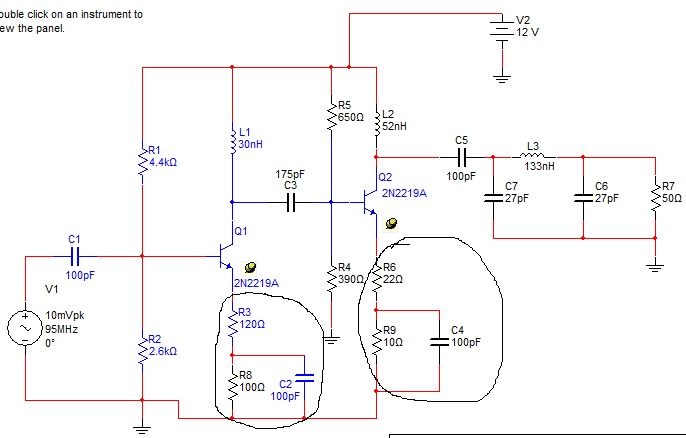Qube
Member level 5
Help needed in analyzing the combination of a Resistor and a capacitor in a Schematic..?
In this below schematic u can see two circuit marks,which points out a bypass cap in parallel with a resistor and also a resistor above this parallel cap/resistor..

Please explain,
wat are it's functions..?
wat is it advantages..?
and wat is it disadvantages..?
And finally do u think that type of configuration is worth in this circuit.....
And i think the total resistance value can be determined at the Transistor's emitter by adding the the resistors value which are in series..Am i right????
Thank u
In this below schematic u can see two circuit marks,which points out a bypass cap in parallel with a resistor and also a resistor above this parallel cap/resistor..

Please explain,
wat are it's functions..?
wat is it advantages..?
and wat is it disadvantages..?
And finally do u think that type of configuration is worth in this circuit.....
And i think the total resistance value can be determined at the Transistor's emitter by adding the the resistors value which are in series..Am i right????
Thank u